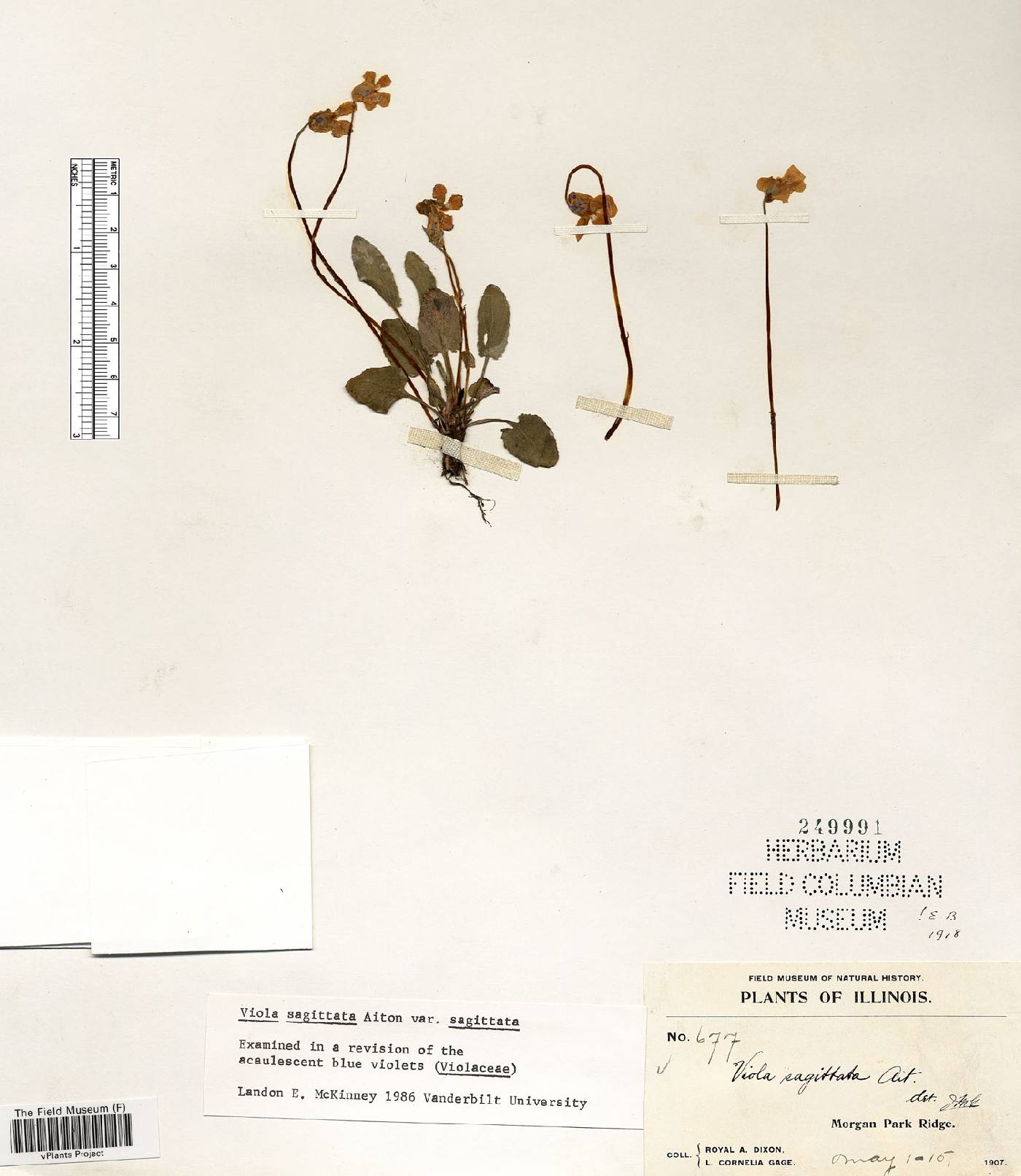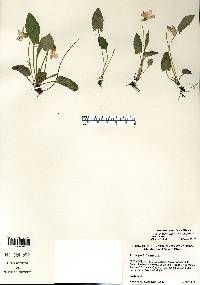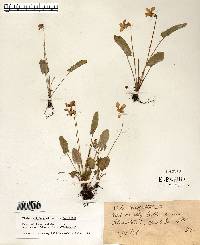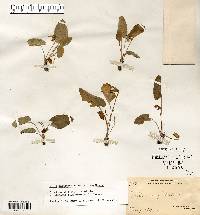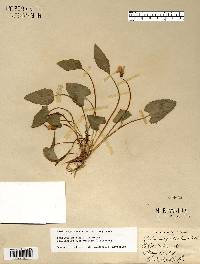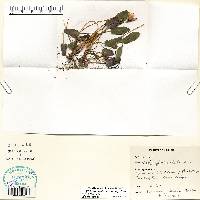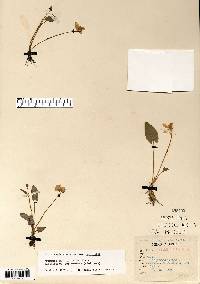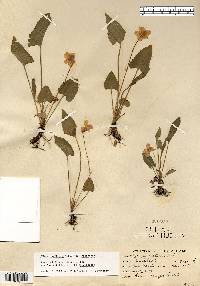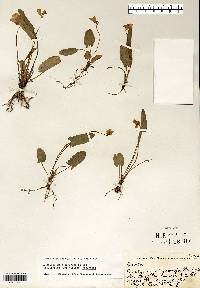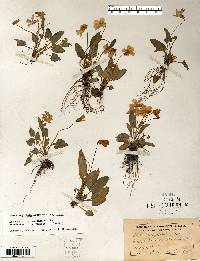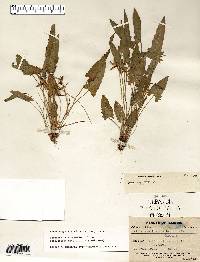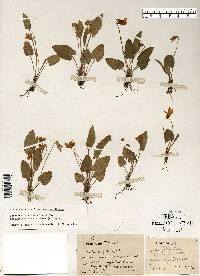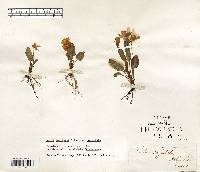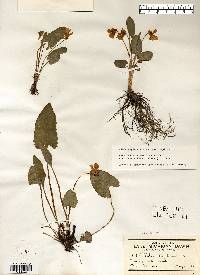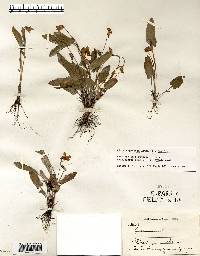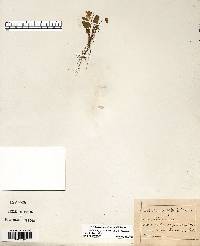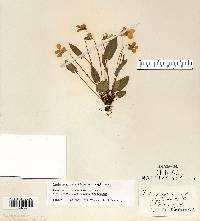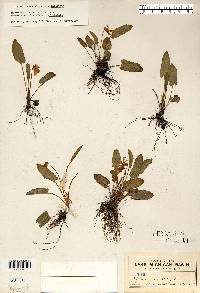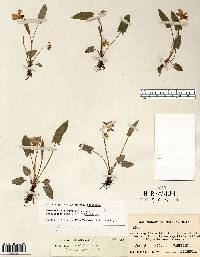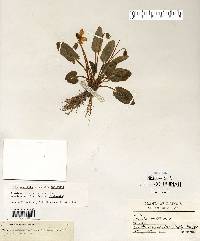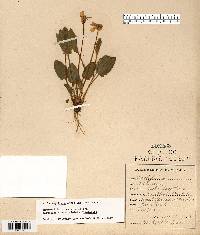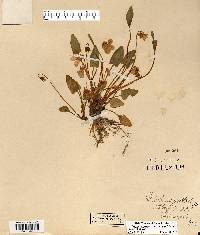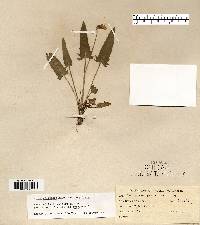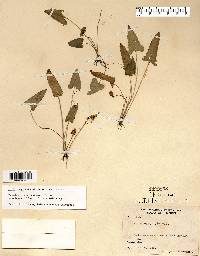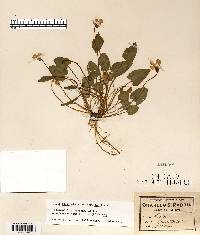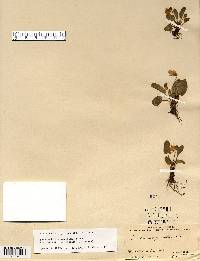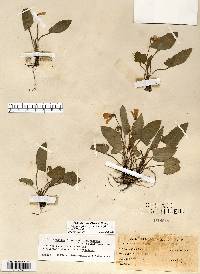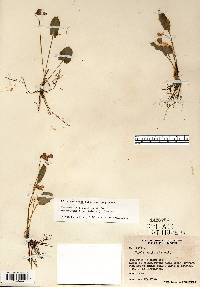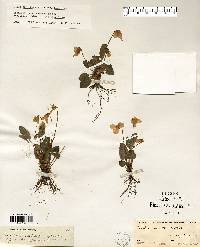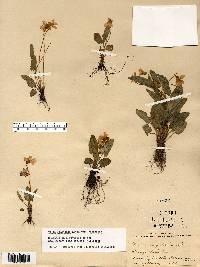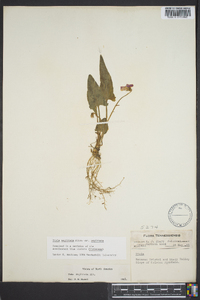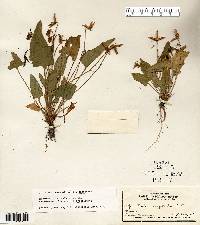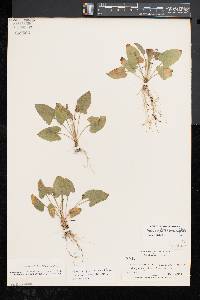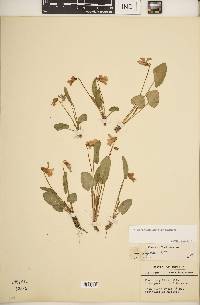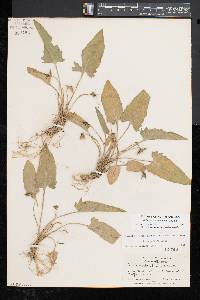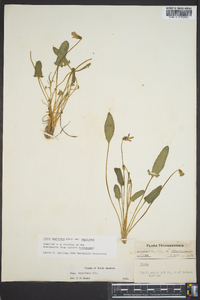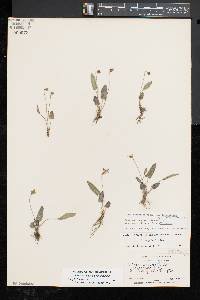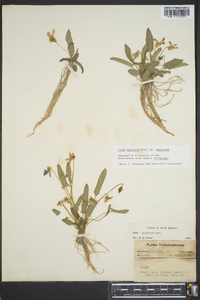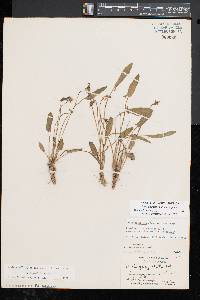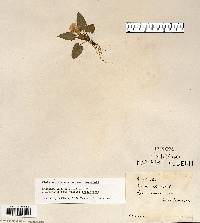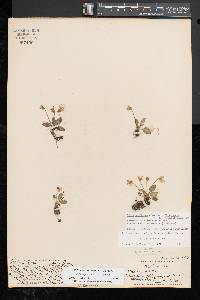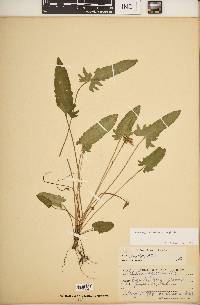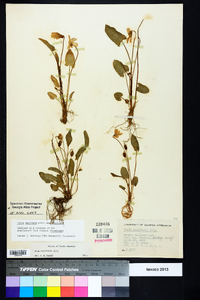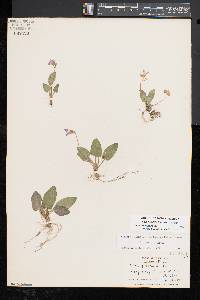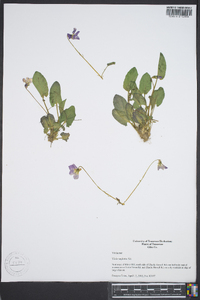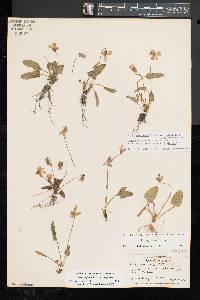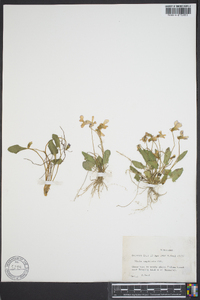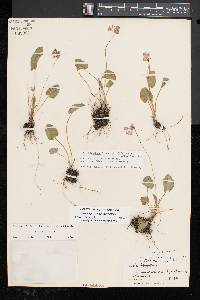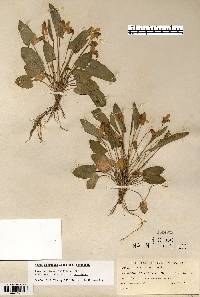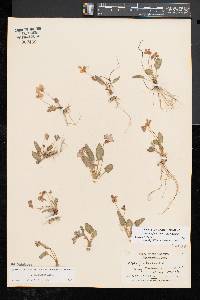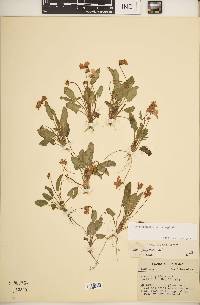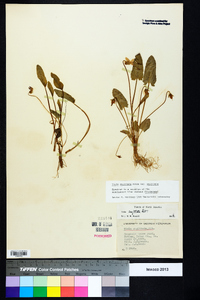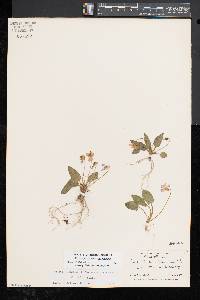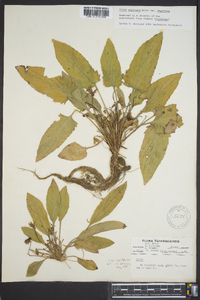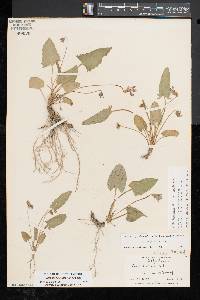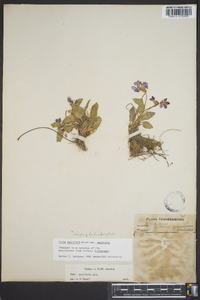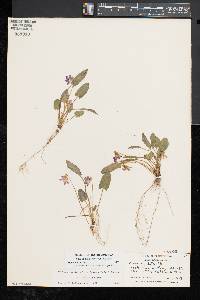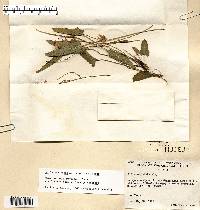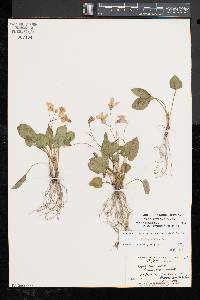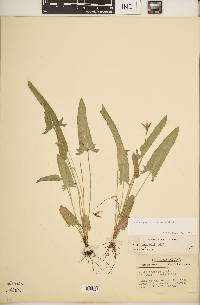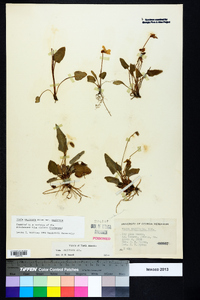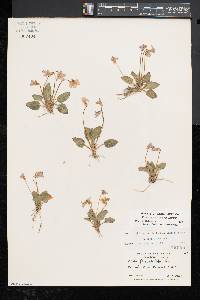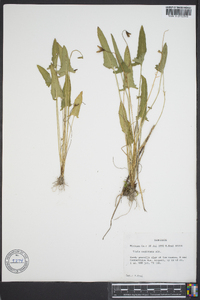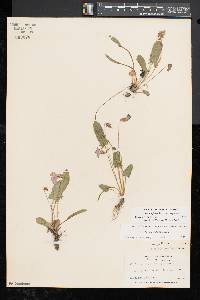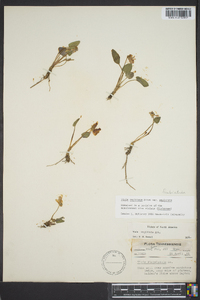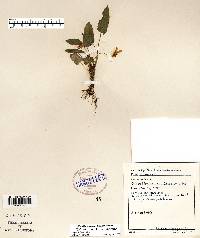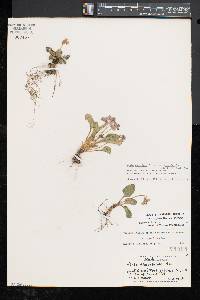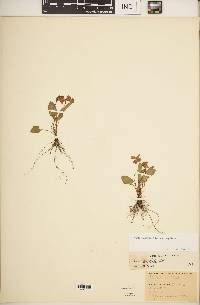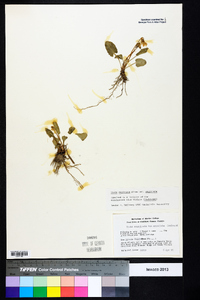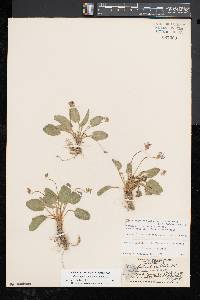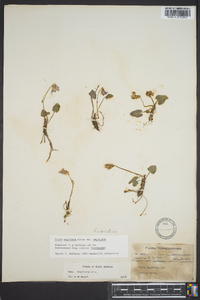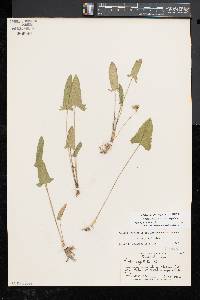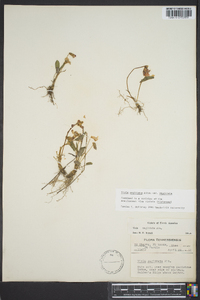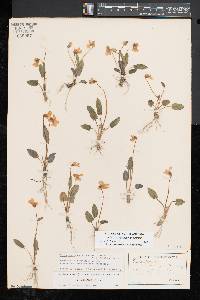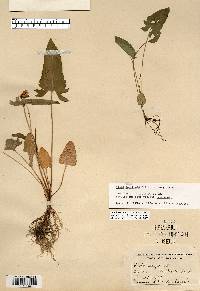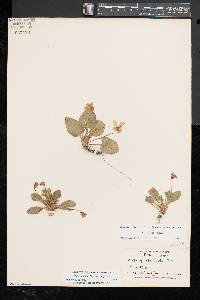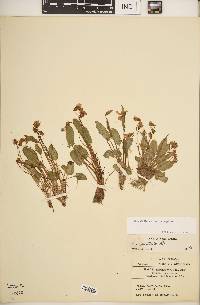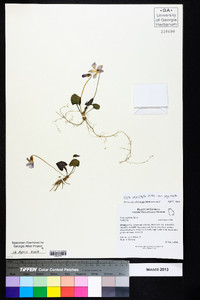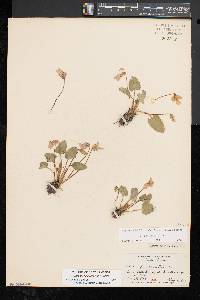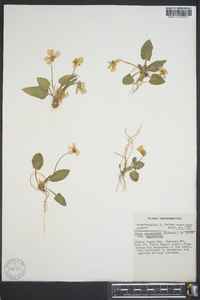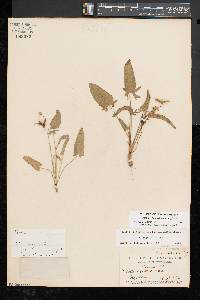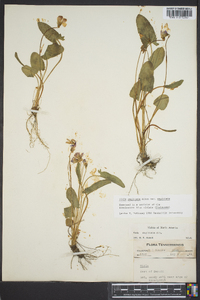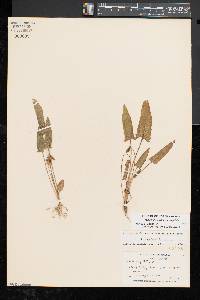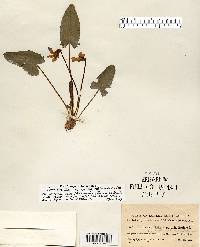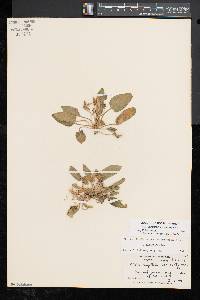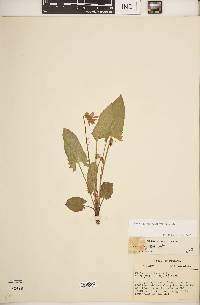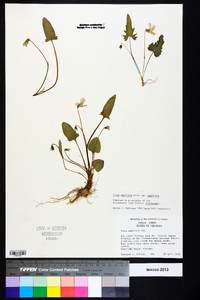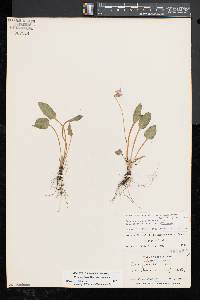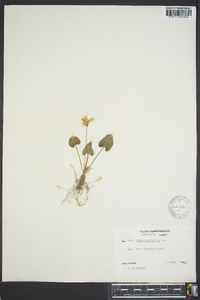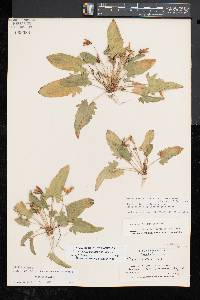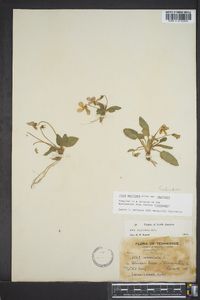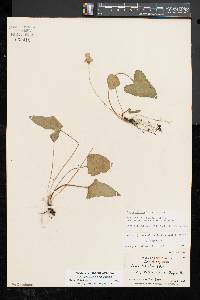Viola sagittata var. sagittata
|
|
|
|
Family: Violaceae
Arrow-Leaf Violet, more...Northern Downy Violet
|
Perennial herb 3 - 30 cm tall Stem: absent aboveground, leaves and flowers arising independently and directly from rootstock of thick (much greater than 3 mm diameter), prostrate or ascending rhizomes, but lacking runners (stolons). Leaves: basal, erect, long-stalked (longer than blade), hairless or sparsely short appressed-hairy, typically shallowly toothed, much longer than wide, elongate triangular to arrowhead-shaped in outline. The size and shape of leaf blades differs with the seasons: in spring the leaf blades are as short as 2 cm and possibly only coarsely toothed near the base, while in summer the blades can be up to 8 cm long and are usually deeply linear-lobed in the basal third or quarter. Stipules green, less than 1.5 cm long, and fully separate from leaf stalk. In fruit, the leaf stalks elongate further so they can be two to four times longer than the leaf blade. Flowers: ascending to erectly-stalked, light to dark blue-violet, 1 - 2 cm long, bilaterally symmetric with two upper petals, two lateral petals, and lower petal with base modified into a rounded nectar spur. In the summer, producing very fertile flowers that do not open (cleistogamous). Sepals: five, green, bristly-hairy, lance-shaped with long-tapering pointed tips, and ear-like appendages (auricles) at the base. Petals: five, separate, all differently shaped, but all forward-facing. The two lateral petals and lowest petal have a thick beard of hairs near the base, and the lowest petal is also prolonged at its base into a short, rounded spur or sac. Stamens: five, separate, but very tightly arranged so anthers touch as they surround ovary. The filaments are very short (anthers not exposed), and the lower two stamens have spur-like nectaries on their backs that extend into the spur or sac of the lower petal. Pistil: with a single-chambered, superior ovary; and a single style that expands into a short, scoop-shaped stigma. Fruit: a many-seeded, green, hairless, ellipsoid capsule on erect stalks. The capsule opens lengthwise from its top to disperse the seeds which have a large amount of oily endosperm, and often an appendage (aril). Similar species: In the Chicago Region, Viola sagittata var. sagittata is most similar to the other variety V. sagittata var. ovata, but that variety has densely hairy leaves that are more prostrate or weakly ascending, the leaf blades are more elliptic or egg-shaped and only coarsely toothed near the base, and the leaf stalks are shorter than or at most equal in length to the leaf blades. Also somewhat similar are V. x subsinuata and V. x palmata, but both of those hybrids have leaves that are only up to one and a half times longer than wide, the sepals are shorter and more oblong with blunt tips, the spur petal rarely has a beard of hairs, and the capsules are flecked with purple and attached to prostrate or arched stalks. Flowering: April to June Habitat and ecology: Occasional, requiring sandy soils, often in somewhat disturbed habitats such as previously cultivated areas, excavated areas, disturbed sandy prairies, or even sandy flats. Occurence in the Chicago region: native Notes: The basal linear lobes of the leaves in this variety make it fairly distinguishable from V. sagittata var. ovata. However, in some prairie habitats the two varieties may overlap and can be hard to discern. This variety is referable to the entity described in Swink and Wilhelm (1994) as V. sagittata. The taxon they call V. fimbriatula is V. sagittata var. ovata. Etymology: Viola is the classical name for the genus. Sagittata means "arrow-shaped", referring to the leaf shape. Author: The Field Museum From Flora of Indiana (1940) by Charles C. Deam In northern Indiana this species is generally found in black, moist, sandy soil in the open or in open woods. Rather local. Probably absent in many of the central counties, appearing again in southeastern Indiana in slightly acid soil in the sweet gum flats; in the knobstone area on or near the crests of Virginia pine and chestnut oak ridges; and in southwestern Indiana in the post oak flats. Rare in southern Indiana. …… Indiana Coefficient of Conservatism: C = 6 Wetland Indicator Status: FAC |

